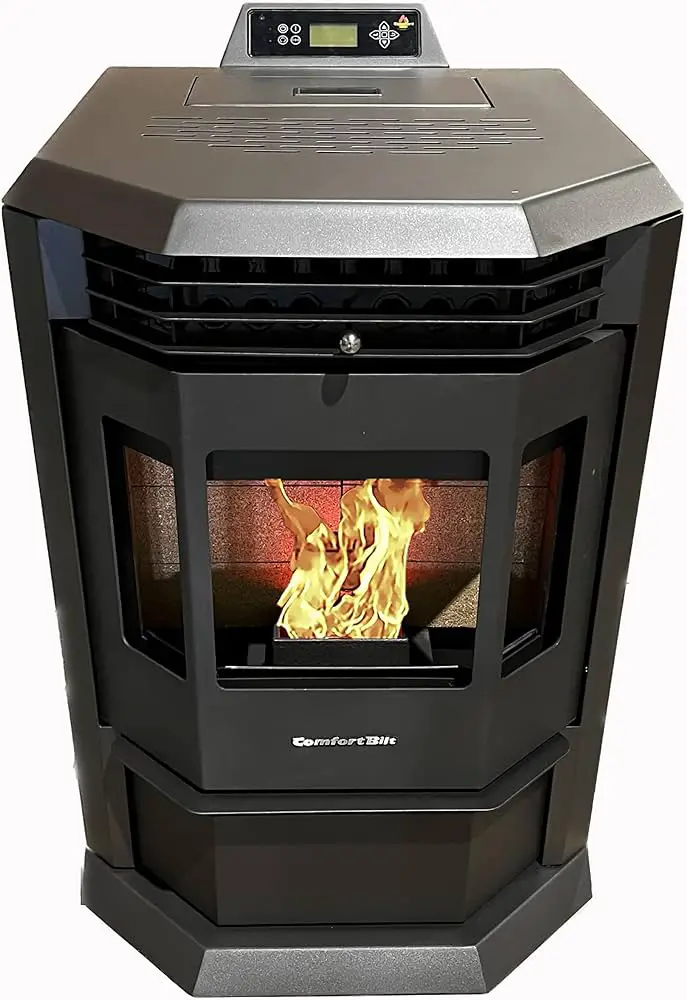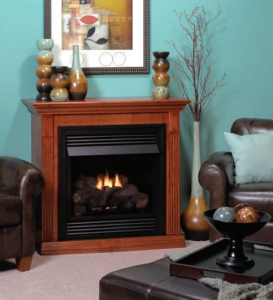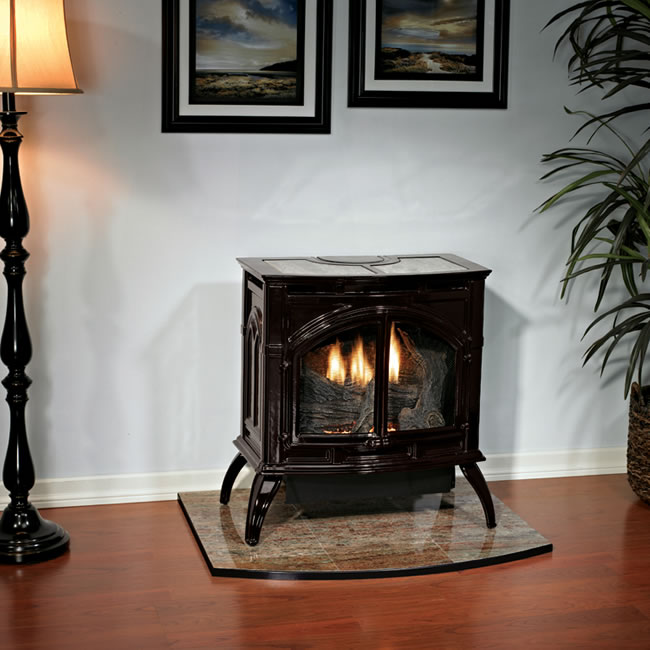Pellet stoves are not ventless; they require a flue to vent smoke and gases produced during combustion. Pellets stoves need proper ventilation for safe operation and efficiency.
Pellet stoves use a flue system to expel combustion byproducts, ensuring indoor air quality. Proper ventilation is crucial to prevent the buildup of harmful gases inside the living space. Regular maintenance of the venting system is necessary to ensure the stove functions effectively and safely.
Understanding the venting requirements of pellet stoves is essential for homeowners considering installing this type of heating appliance. By following proper venting guidelines, users can enjoy the benefits of a pellet stove while maintaining a safe indoor environment.

Ventless Pellet Stoves
Ventless pellet stoves provide efficient heating without the need for a traditional ventilation system. These stoves operate differently from vented pellet stoves, offering a convenient solution for heating spaces without the requirement of a chimney or external venting.
How Do Ventless Pellet Stoves Work?
Ventless pellet stoves work by burning pellets within an enclosed chamber, using a combustion process that produces minimal emissions. These stoves are designed to consume the pellets efficiently, converting them into heat that is distributed into the room.
Comparison With Vented Pellet Stoves
Ventless pellet stoves differ from vented models in that they do not require a venting system to exhaust combustion byproducts. Vented pellet stoves, on the other hand, need a chimney or flue to remove smoke and gases generated during operation.

Credit: www.fireplacesdirect.com
Advantages And Disadvantages
- Efficient Heating: Ventless pellet stoves provide efficient heating without the need for a chimney or external ventilation system.
- Easy Installation: These stoves are typically easier to install compared to traditional vented stoves, making them a convenient heating option.
- Cost-Effective: Ventless pellet stoves can be cost-effective in terms of installation and maintenance, saving you money in the long run.
- Flexibility: They offer flexibility in placement within a room since they do not require a vent, allowing for more design options.
- Potential Indoor Air Quality Issues: Without proper ventilation, there may be concerns about indoor air quality and the accumulation of pollutants.
- Lack of Exhaust Control: Ventless pellet stoves do not have an exhaust system to remove byproducts, which can lead to air quality issues.
- Moisture Concerns: These stoves may produce excess moisture during operation, which can lead to humidity-related problems in the home.
- Regulatory Restrictions: Certain regions or building codes may prohibit the use of ventless pellet stoves due to safety or environmental concerns.
Installation And Maintenance
Pellet stoves can be ventless and do not require a traditional chimney for installation. They utilize vent-free technology to deliver efficient heating without the need for external ventilation. Maintenance for ventless pellet stoves is relatively hassle-free, making them a convenient choice for homeowners seeking an alternative heating solution.
Installing Ventless Pellet Stoves
When installing ventless pellet stoves, it’s essential to ensure compliance with local building codes and manufacturer’s instructions. Here are the key steps for installation:
- Choose a suitable location for the stove, considering clearances to combustible materials.
- Prepare the necessary hearth pad or floor protection as per the stove specifications.
- Assemble the ventless pellet stove according to the manufacturer’s guidelines.
- Connect the stove to the venting system, ensuring a proper seal to prevent any leaks.
- Test the stove for proper operation and ensure it meets safety standards.
Maintaining Ventless Pellet Stoves
Maintenance is crucial to ensure the efficient and safe operation of ventless pellet stoves. Here’s how to maintain them:
- Clean the Exhaust System: Regularly clean the exhaust venting system to prevent blockages and ensure proper airflow.
- Inspect the Pellet Feeder: Check the pellet feeding mechanism for any obstructions or malfunctioning parts.
- Clean the Burn Pot: Remove ash and debris from the burn pot to maintain efficient combustion.
- Inspect Gaskets and Seals: Ensure all gaskets and seals are intact to prevent air leaks.
- Professional Servicing: Schedule annual professional servicing to inspect and maintain critical components.

Credit: www.finesgas.com
Ventilation Options
Ventilation options for pellet stoves offer solutions for efficient heating without requiring a vent. Some models operate via natural convection, eliminating the need for a chimney or external venting, making them versatile heating choices for various spaces.
Ventilation-free Options
Are you looking for a pellet stove that requires no ventilation system? Good news! There are options available that do not require any external venting. These ventilation-free pellet stoves operate through natural convection, without the need for fans or flues. You can simply adjust the ventilation to achieve your desired heating level, making it a hassle-free heating solution for your home.
Ventilation With Chimney Or Liner
If you already have a chimney in your home or are willing to install a chimney liner, you can still enjoy the benefits of a pellet stove while ensuring proper ventilation. Installing a pellet stove pipe in an existing chimney requires a chimney liner, as recommended by experts in the field. This ensures that the smoke and gases generated during combustion are safely and efficiently expelled from your home.
Proper ventilation is crucial when it comes to pellet stoves. While ventilation-free options are available, they may not be suitable for every situation. Whether you opt for a ventilation-free setup or choose to go with a chimney or liner, it’s important to ensure that your pellet stove operates safely and efficiently.
Regulations And Safety
Pellet stoves can be ventless, using natural convection without a fan, providing efficient heating solutions. Vent-free options with damper designs ensure simple smoke control for a hassle-free experience. Stay warm inside with freestanding ventless stoves as a fireplace alternative.
Regulatory Considerations
When it comes to pellet stoves, regulations and safety considerations are of utmost importance. Before purchasing a ventless pellet stove, it is essential to understand the regulatory landscape surrounding these appliances. In some regions, there may be specific regulations governing the use of ventless pellet stoves, so it is crucial to research and ensure compliance with local laws and regulations.Safety Measures For Ventless Pellet Stoves
Safety should always be a top priority when installing and using a ventless pellet stove. Here are some safety measures to keep in mind:- Proper Ventilation: Ventless pellet stoves may not require a traditional chimney or flue, but they still need proper ventilation to ensure the efficient release of combustion byproducts. Adequate air supply and ventilation are vital to prevent the buildup of carbon monoxide and other harmful gases.
- Carbon Monoxide Detectors: Installing carbon monoxide detectors near the pellet stove and in other areas of the house is an essential safety precaution. These detectors can quickly alert you to any carbon monoxide leaks, allowing you to take immediate action.
- Regular Maintenance: Regular maintenance and servicing of the ventless pellet stove are crucial for its safe and efficient operation. It is recommended to have a professional technician inspect and clean the stove annually to identify any potential issues.
- Safe Fuel Storage: Proper storage of pellet fuel is important to prevent accidents. Store your pellets in a cool, dry place away from direct sunlight and potential ignition sources.
- Clearance Regulations: Maintain the recommended clearance around the stove to prevent fire hazards. Keep combustible materials such as furniture, curtains, and rugs away from the stove.
- Children and Pets: It is essential to keep children and pets away from the stove to avoid burns and other accidents. Consider installing safety gates or barriers to restrict access.

Credit: www.finesgas.com
Frequently Asked Questions For Are Pellet Stoves Ventless
Does A Pellet Stove Need A Vent?
Yes, a pellet stove needs a vent to expel smoke and gases produced. It uses a flue or chimney for ventilation.
How Can A Pellet Stove Be Vent Free?
Pellet stoves can still be vent-free by using a flue to release smoke and gases when burning pellets. They can also be vented through an existing chimney with a liner. Vent-free pellet stoves offer natural convection heating without the need for fans.
They are a great alternative to fireplaces and can be found at Factory Buys Direct and Wayfair. Lowe’s also sells vent-free freestanding stoves and accessories.
Can You Vent A Pellet Stove Into A Chimney Without A Liner?
No, a pellet stove cannot be vented into a chimney without a liner. According to Hunker, installing a pellet stove pipe in an existing chimney requires a chimney liner. The pellets within the stove produce small amounts of smoke and gases that need to be properly vented.
What Are The Disadvantages Of A Pellet Stove?
The drawbacks of a pellet stove include noise, electricity dependency, complex system, fuel availability, and aesthetics.
Are Pellet Stoves Ventless?
No, pellet stoves are not ventless. They require a flue or chimney for venting the small amount of smoke and gases generated during combustion.
Conclusion
Pellet stoves do require venting to release smoke and gases produced during combustion. While ventless pellet stoves do exist, they utilize natural convection for heat and may lack the efficiency of vented models. Understanding the ventilation requirements and drawbacks can help in making an informed decision about using pellet stoves in your home.